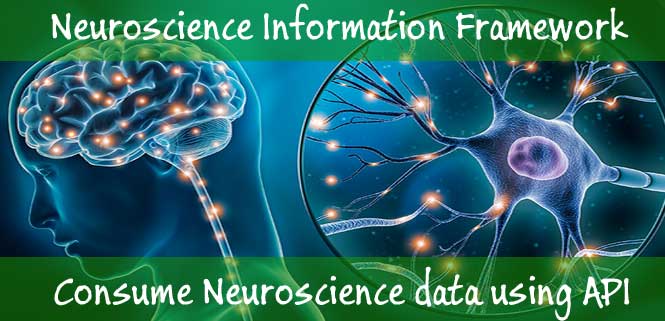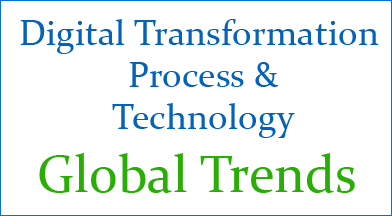Neuroscience, the scientific study of brain’s functionality, which combines multiple fields of study like molecular biology (biological activity in and between cells), biology, cytology, physiology, computer science and mathematical modeling, to understand fundamental of neurons’ functionality, so, neuroscience is super complicated and cool subjects for many.

To start working with neuroscience API and data models and neuroscience information framework, there are various type of Tools, API available, which we can access, and start analyzing data to understand the structure and sequence.
Terminology often used while exploring neuroscience API and consume in medical or healthcare system development or enhancement.
A data structure that define, organize and describe neuron-image and behavioral data of any person, (though there is no standard way is defined yet, data can be collected various way, two researchers working in same assignment, can collect data two different ways.) BIDS is about how to standardize the definition.
MRI machine uses computer-generated radio waves and powerful magnetic field to produce detailed images of our body structures of nerves, organs, bones, and tissues. [mri data set]
An EEG is a test that detects abnormalities in any brain waves, or in the electrical activity of brain, separating normal and abnormal primarily cortical function.
ASL is sign language, how brain interpret visual sign and translate that into communication message, the language is used for communicating with deaf people.
PET is a powerful imaging technique; PET scan shows how the brain and its tissues are working.
There are few python library has been developed to work with neuroscience data effectively, few are used for machine learning and predictive analysis.
Here are some organizations developing open-source neuroscience information framework and standardizing best practices, so more people can access and reuse neuroscience data and practice neuroscience framework as a scientific discipline.
PyNN, PyNN is a simulator-independent language for building neuronal network models. We can consume PyNN API with Python, there are separate python libraries has been developed.
Neuron API that can be consumed in python to create module, learn more about Neuron.
Brian is a free and open source simulator for spiking neural networks written in Python.
You can download and install python library
pip install brian2
INCF network is an organization for neuroscience research, and developing open neuroscience framework that will help building computational approaches for understanding brain, that positively impact health and well-being of society.
Open-Neuroscience another neuroscience research and development platform, formed by neuroscience professionals from diverse fields, the platform provides user-driven database of open neuroscience projects.
OpenNeuro is a platform that brings free and sharable data for MRI, MEG, EEG, iEEG, ECoG, ASL, and PET data, various neuroscience dataset for public, the platform is supported by National Science Foundation, Stanford etc.
The platform provides various type of openly downloadable dataset that we can work with use NodeJs, Python, Github etc.
Allen Institute of Brain Science: Institute for studying brain science, supported by the National Institutes of Health’s Brain Research.
Read data stories like Decoding the brain, Bringing insights of human brain region that controls voluntary movement, and how human brain evolved by comparing our brain’s cellular composition to that of monkey or mouse.
Allen Brain Map, the portal provides various type of brain database for researchers, database like cell type database, brain observatory, human brain atlas etc, the huge repository allow researcher to search brain data using keywords.
Nuroscience data format may differ depending on nature of API, some Api provides data in xml format, some are in json format, let’s look at some examples
Here is how human brain data (experimental Supplemental RNA-Sequencing Data) looks like in Json format
"probes":[{
"id":1023146,
"name":"A_23_P358345",
"gene-id":6494,
"gene-symbol":"SLC6A2",
"gene-name":"solute carrier family 6 (neurotransmitter transporter, noradrenalin), member 2",
"entrez-id":6530,"chromosome":"16","start-position":"n/a","end-position":"n/a",
"expression_level":["13.2802","13.9603","13.9650"],
"z-score":["9.3381","9.8663","9.8700"]},
{
"id":1023147,
"name":"CUST_16472_PI416261804",
"gene-id":6494,
"gene-symbol":"SLC6A2",
"gene-name":"solute carrier family 6 (neurotransmitter transporter, noradrenalin), member 2",
"entrez-id":6530,"chromosome":"16","start-position":"n/a","end-position":"n/a",
"expression_level":["8.1878","8.5644","8.2310"],
"z-score":["9.3201","9.8326","9.3790"]}
],
"samples":[
{"donor":{"id":15496,"name":"H0351.1015","age":"49 years","color":"C2C200"},
"sample":
{"well":148955246,"polygon":127107914,"mri":[95,121,126]},
"structure":{"id":9149,"name":"locus ceruleus, Left","abbreviation":"LC","color":"00FFAA"},
"top_level_structure":{"id":9135,"name":"Pontine Tegmentum","abbreviation":"PTg","color":"00FFAA"}},
{"donor":{"id":15496,"name":"H0351.1015","age":"49 years","color":"C2C200"},
"sample":
{"well":148955204,"polygon":126786164,"mri":[97,151,131]},
"structure":{"id":9149,"name":"locus ceruleus, Left","abbreviation":"LC","color":"00FFAA"},
"top_level_structure":{"id":9135,"name":"Pontine Tegmentum","abbreviation":"PTg","color":"00FFAA"}},
{"donor":{"id":15496,"name":"H0351.1015","age":"49 years","color":"C2C200"},
"sample":
{"well":156435966,"polygon":126789834,"mri":[96,159,134]},
"structure":{"id":9149,"name":"locus ceruleus, Left","abbreviation":"LC","color":"00FFAA"},
"top_level_structure":{"id":9135,"name":"Pontine Tegmentum","abbreviation":"PTg","color":"00FFAA"}}
]
Check more details about various data with different parameter from Allen Brain Atlas API
There are few services that allow you to make call in xml format.
For example, you can try another API for "magnetic resonance imaging" by calling following url.
http://api.brain-map.org/api/v2/data/query.xml?criteria=model::Donor, rma::criteria,products[abbreviation$eq'HumanMA'], rma::include,specimens[parent_id$eqnull](alignment3d), rma::options[only$eq'donors.id,donors.name,specimens.id']
The above search result will get you all brain images from repository matching with parameters value.
Neural Networks is a subset of Artificial Intelligence, which is simulated neuron network of human brain, based concept of how biological neuron send signal to another neuron, artificial neural networks is known as ANN, learn more about neural networks.
Natural Language Processing (NLP):
Natural language processing is a part of Artificial Intelligence, NLP helps computers to understand, interpret human language, to fill the gap between human communication language and computer understanding, natural language processing is the subset of computational linguistics.

Learn web development, Free Tutorials, Learn Skills!

Let's help your kids start coding, a baby step can make big difference in their future.
